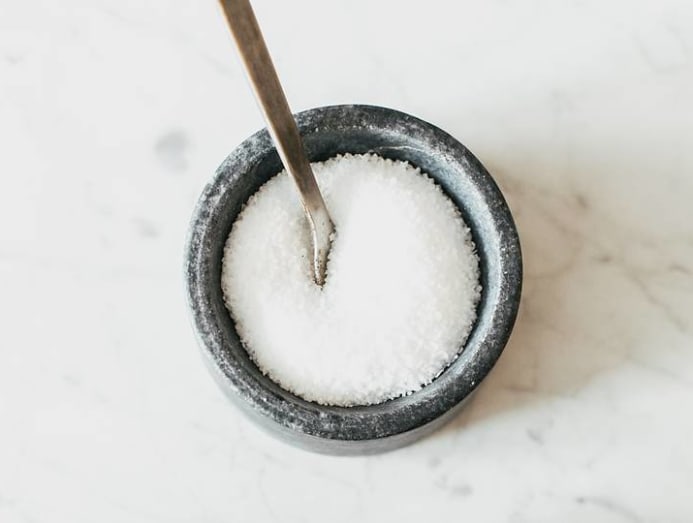Commentary: Salt, China’s deadly food habit
LONDON: People in Prc have used salt to set and preserve food for thousands of years.
But consuming lots of salt raises blood pressure, increasing the take a chance of cardiovascular disease.
Cardiovascular disease, which includes middle assault and stroke, at present accounts for 40 per cent of deaths in China.
It is well known that common salt consumption in Mainland china is high, only accurate assessments are scarce. Public health experts need robust estimates of salt intake to aid them develop strategies to reduce this intake.
An instance of a promising strategy is replacing regular salt with potassium common salt, which contains less sodium (which raises blood force per unit area) and more potassium (which lowers blood pressure).
READ: High blood pressure, high cholesterol early in life tied to heart issues afterward
The almost accurate style to measure common salt intake is to measure the sodium excreted in urine over a 24-hour period. Although this data was nerveless in China, it has never been comprehensively reviewed.
Our latest review, published in the Journal of the American Heart Clan, aimed to plug this noesis gap.
Searching both English and Chinese-language databases for all studies ever published that reported 24-hour urinary excretion of either sodium or potassium in People's republic of china, we found seventy with sodium data (drawn from more 26,700 participants), of which 59 also reported potassium data (drawn from more than than 24,700 participants).
The data spanned four decades and covered near provinces of Prc.
Of all the reviews of salt intake in Mainland china, our review is the outset to be systematic and is by far the largest.
Loftier SALT AND Low POTASSIUM INTAKES
Our meta-analysis of the combined data revealed important patterns in salt and potassium consumption in China. We institute, for case, that on average children and adolescents exceed the salt-intake limit prepare for adults.
The World Wellness Organisation (WHO) recommends adults consume less than 5g of table salt per 24-hour interval, and this upper limit should be reduced for children and adolescents according to their free energy requirements.
In China, even so, children aged three to 6, on average, eat 5g of salt per mean solar day. The WHO recommendation was far exceeded by children and adolescents aged vi to 16 years.
Their intake averaged a worrying 8.7g per day.

In adults, the average salt intake was 10.9g per solar day, which is more than twice the maximum recommendation set past the WHO and i of the highest salt intakes in the earth.
Our review too showed geographical differences between northern and southern China.
Salt intake in northern China has declined over the by four decades, which may be the result of the government's efforts to increment salt sensation and of improvements in the twelvemonth-round availability of fresh produce.
READ: Mindful eating can assist you lose weight, a commentary
Withal, despite this decline, the average salt intake in northern Chinese adults remains high, at 11.2g per day.
In dissimilarity, salt intake in southern China has increased during that same period, which could exist due to increased consumption of processed, restaurant and takeaway foods, which are typically loftier in common salt.
Finally, we besides constitute that potassium intake was less than half the recommendation. Potassium intake has been consistently low throughout Mainland china for the past 40 years, with people in all age groups consuming less than half the recommended minimum intakes.
IMPROVING MATTERS
With a 5th of the earth's population living in People's republic of china, reducing salt and increasing potassium intakes across the country would exist of enormous benefit for global health.

Replacing regular salt with potassium salt can help achieve this. Different in Western countries, where near of the salt comes from processed foods, most salt consumed in China comes from the salt added while cooking.
READ: That processed food is causing you to proceeds weight, a commentary
Potassium common salt can be used the aforementioned style as regular salt and would have the added benefit of increasing people's potassium intake.
Starting early in life tin can help as well. Babyhood and adolescence are when dietary habits and gustation preferences are formed.
If a kid eats more salt, they will develop the taste for salt and are more probable to consume more common salt every bit an adult. Too, high blood pressure in babyhood tracks into machismo.
Anticipating new sources of table salt intake can reduce its consumption.
Mind: The Pulse - We love fast nutrient fads merely want to stay healthy
At that place is a rapid increase in the consumption of processed foods and of food from street markets, restaurants and fast-food chains in People's republic of china.
Setting maximum targets for their common salt content would create a level playing field where salt is reduced across the board, which would help guide the population in getting used to a less salty gustatory modality.
Monique Tan is a PhD Researcher at Queen Mary University of London, with expertise in nutrition and international health. A version of this commentary first appeared on The Conversation. Read information technology here.
Source: https://cnalifestyle.channelnewsasia.com/commentary/commentary-salt-chinas-deadly-food-habit-284541
0 Response to "Commentary: Salt, China’s deadly food habit"
Post a Comment